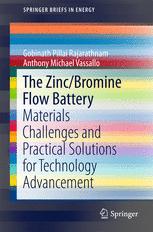

Most ebook files are in PDF format, so you can easily read them using various software such as Foxit Reader or directly on the Google Chrome browser.
Some ebook files are released by publishers in other formats such as .awz, .mobi, .epub, .fb2, etc. You may need to install specific software to read these formats on mobile/PC, such as Calibre.
Please read the tutorial at this link: https://ebookbell.com/faq
We offer FREE conversion to the popular formats you request; however, this may take some time. Therefore, right after payment, please email us, and we will try to provide the service as quickly as possible.
For some exceptional file formats or broken links (if any), please refrain from opening any disputes. Instead, email us first, and we will try to assist within a maximum of 6 hours.
EbookBell Team

4.0
16 reviewsThis book presents a detailed technical overview of short- and long-term materials and design challenges to zinc/bromine flow battery advancement, the need for energy storage in the electrical grid and how these may be met with the Zn/Br system. Practical interdisciplinary pathways forward are identified via cross-comparison and comprehensive review of significant findings from more than 300 published works, with clear in-depth explanations spanning initial RFB development to state-of-the-art research in related systems. Promising strategies described include the use of modern electrochemical techniques to study and optimize physical processes occurring within the system during operation, improving zinc electroplating quality during the charge phase through the strategic use of organic additives, as well as identifying suitable catalysts to optimize the bromine/bromide redox couple. The primary focus is on research and development of novel materials in the areas of electrolyte formulation and multifunctional “smart” electrode surfaces to achieve a higher degree of control over processes at the electrode–electrolyte interface. The strategies suggested in this book are also highly adaptable for use in other similar flow battery systems, while the unique cross-comparative approach makes it a useful reference and source of new ideas for both new and established researchers in the field of energy storage and battery technology.